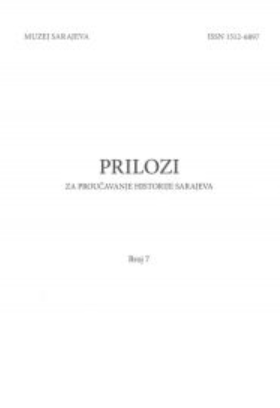SVRZINA KUĆA
SVRZO’S HOUSE
Author(s): Amra MadžarevićSubject(s): Museology & Heritage Studies, Architecture, 18th Century, 19th Century, The Ottoman Empire
Published by: JU Muzej Sarajeva
Keywords: Sarajevo; Museum; Svrzina kuća; Ottoman Empire; heritage; architecture;
Summary/Abstract: Svrzo’s House, a dependency of the Museum of Sarajevo, is an example of Ottoman-period residential architecture in Sarajevo and of the lifestyle of a Muslim family in the late 18th and throughout the 19th century. It consists of a group of buildings forming a single complex, built in stages, with the oldest part dating from the late 18th century. It was built by the upper-class Glođo family, but when the family was left without a male heir, it passed by marriage to another old Sarajevo family, the Svrzos, who were merchants. Members of the Glođo family are known for their erudition, but also for leading the struggle for Bosnian autonomy within the Ottoman Empire. The house has some features of Ottoman residential architecture, but differs from those in other regions of the Empire by virtue of its adaptation to the climate and the steep hillsides of Sarajevo. Unlike the symmetrical layout of the houses of less hilly regions, therefore, it is extremely asymmetrical. The complex consists of the selamluk or public areas of the house, commonly known as the men’s quarters, and the haremluk or private family areas, popularly known as the women’s quarters. Normal family life took place in the haremluk, while the selamluk was used by the male members of the family to receive guests and conduct their business affairs. The complex has two courtyards and two gardens, as well as two outdoor fountains with running water. The house is furnished and equipped with original articles, some of which belonged to the family from whom it was purchased, while others came from other, similar houses of the period.
Journal: Prilozi za proučavanje historije Sarajeva
- Issue Year: 2010
- Issue No: 7
- Page Range: 29-43
- Page Count: 15
- Language: Bosnian

